Types of Indoor Succulents
Indoor succulents are popular houseplants known for their unique shapes, low maintenance requirements, and ability to thrive in various indoor environments. These plants come in a wide array of types, each with their own distinct characteristics and care needs.
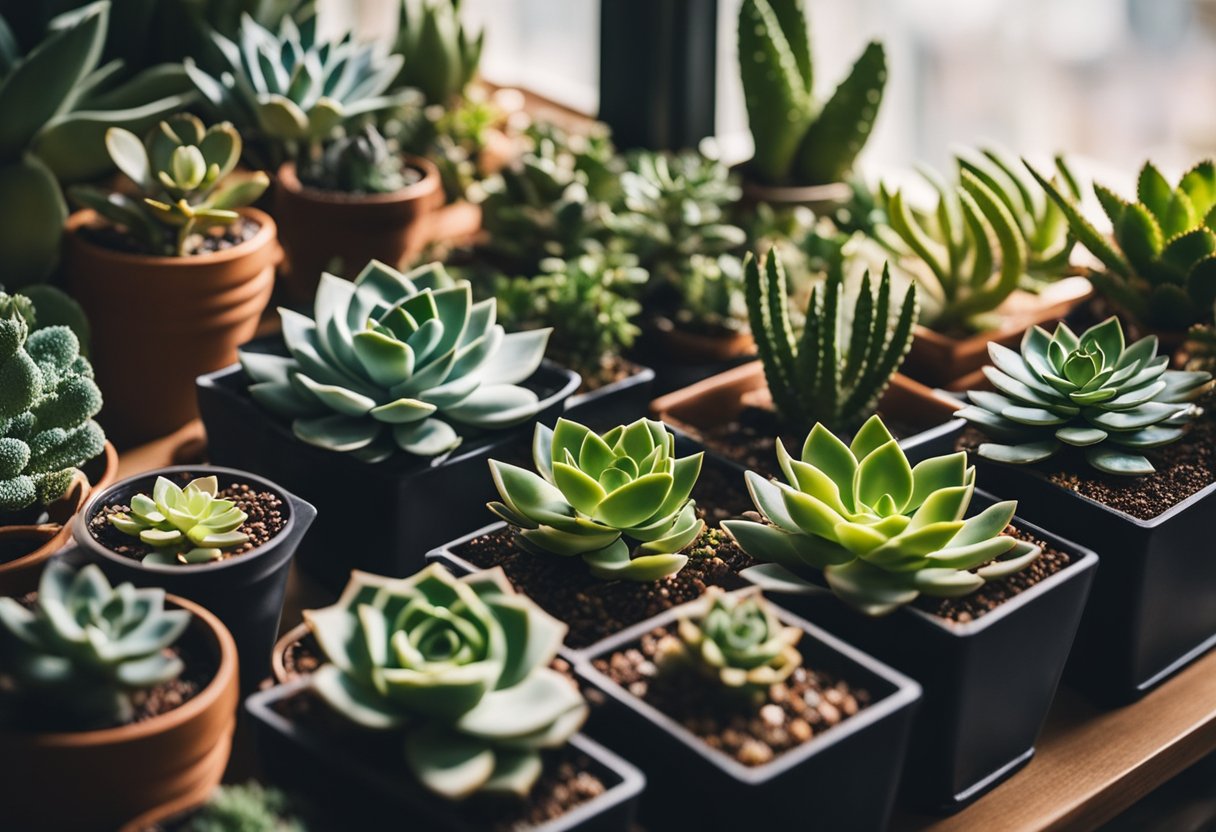
You can choose from several types of indoor succulents, including Echeveria, Haworthia, Jade Plant, and Aloe Vera, each offering different visual appeal and benefits. Some succulents, like the Snake Plant and Aloe Vera, can help improve indoor air quality by removing pollutants from the air.
When selecting indoor succulents, consider factors such as light requirements, growth patterns, and your personal aesthetic preferences. Many succulents prefer bright, indirect light, while others can tolerate lower light conditions. By understanding the specific needs of different succulent types, you can create stunning indoor displays that thrive in your home or office environment.
Fundamentals of Indoor Succulents
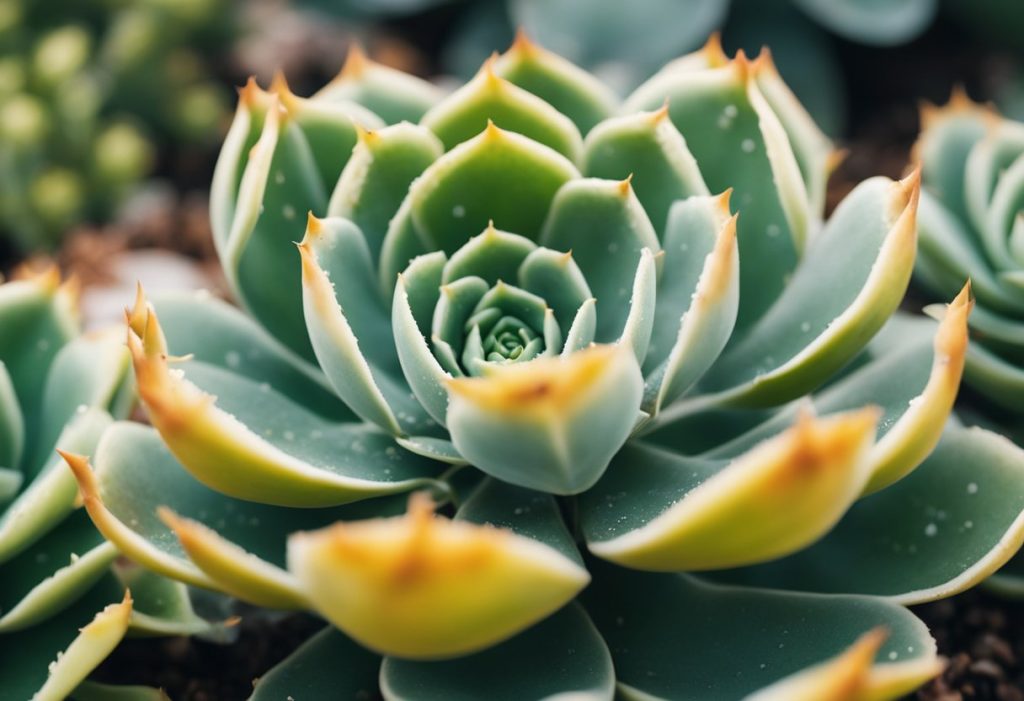
Indoor succulents offer unique beauty and resilience for your home. Their distinctive features and low-maintenance nature make them popular choices for indoor gardening enthusiasts.
Recognizing Succulents
It’s usually pretty easy to identify succulents with just your eyes. Succulents are plants with thick, fleshy parts that store water. This adaptation allows them to thrive in arid conditions. You’ll find succulent tissue in leaves, stems, or roots, depending on the variety.
Ornamental succulents come in diverse shapes, sizes, and colors. Common indoor varieties include:
- Aloe vera
- Jade plant (Crassula ovata)
- Echeveria
- String of pearls (Senecio rowleyanus)
- Burro’s tail (Sedum morganianum)
These plants have specialized structures to minimize water loss. Their leaves often have a waxy coating or reduced surface area to prevent evaporation.
Benefits of Indoor Succulents
Indoor succulents offer numerous advantages for your living space. They require minimal care, making them ideal for busy individuals or those new to plant care.
Key benefits include:
- Low water needs: You’ll save time and resources on watering.
- Air purification: Succulents can help improve indoor air quality.
- Aesthetic appeal: Their unique forms add visual interest to any room.
- Versatility: Succulents thrive in various indoor environments, from bright windowsills to low-light areas. (note: careful with windowsills that get direct sunlight all day as this will probably be too much light)
You can easily propagate many succulent species, allowing you to expand your collection or share with friends. Their compact size makes them suitable for small spaces or as part of larger plant displays.
Popular Types of Indoor Succulents
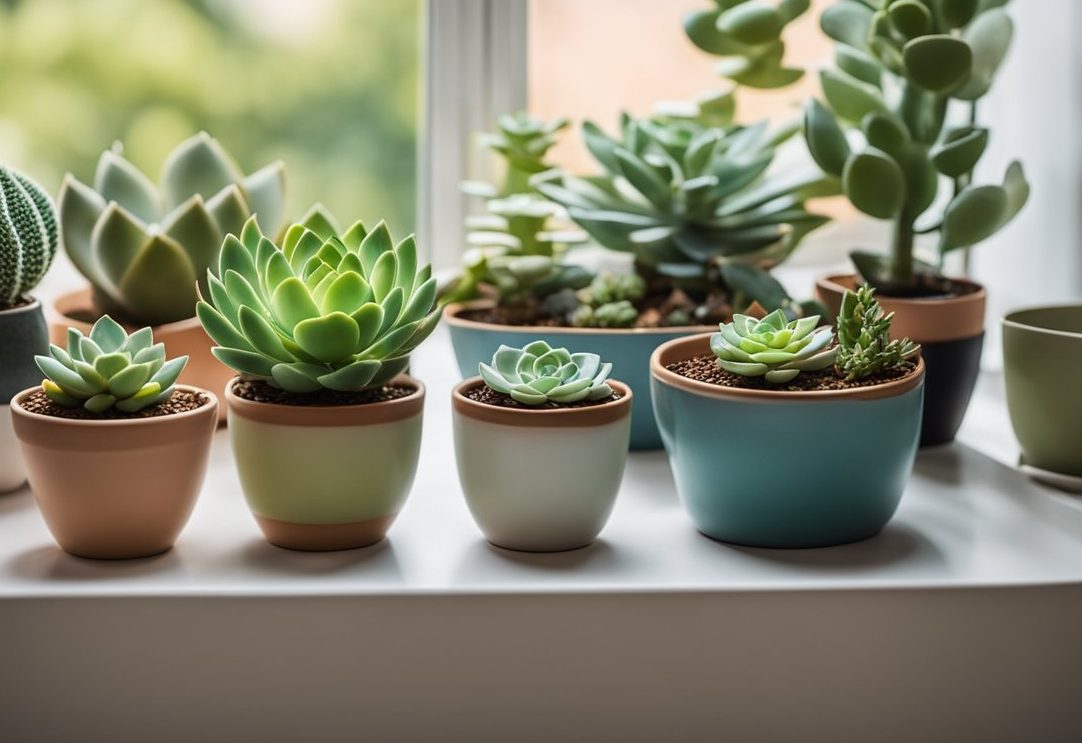
Indoor succulents have become increasingly popular for their unique shapes, low maintenance requirements, and ability to thrive in various indoor environments. These versatile plants come in a wide range of species, each with distinct characteristics and care needs.
Aloe Varieties
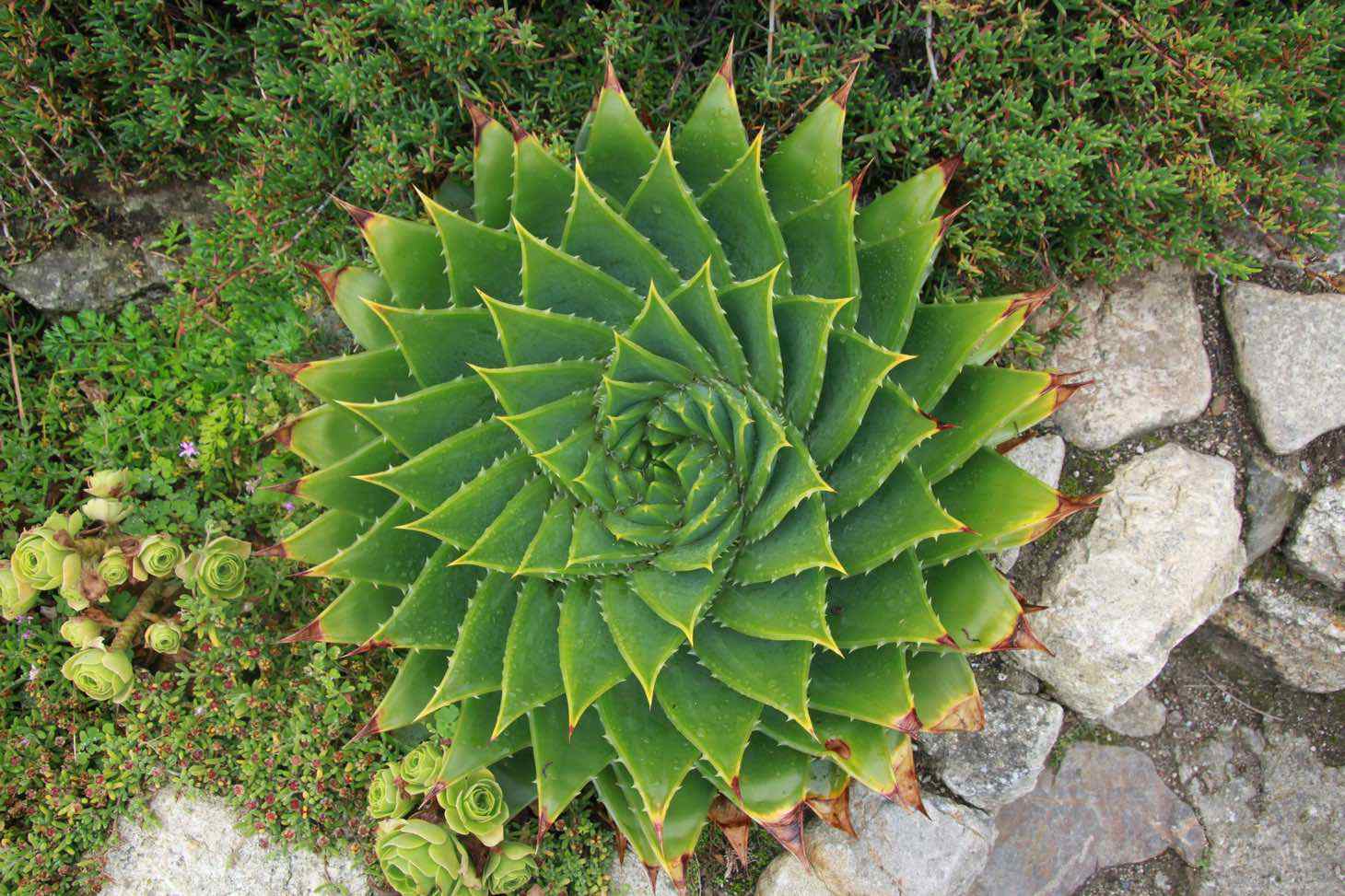
Aloe plants are well-known for their fleshy, spear-shaped leaves and medicinal properties. The most common variety, Aloe vera, is prized for its soothing gel. Other popular indoor aloe species include:
- Aloe aristata (Lace Aloe)
- Aloe polyphylla (Spiral Aloe) seen in photo above
- Aloe humilis (Spider Aloe)
Aloe plants prefer bright, indirect light and well-draining soil. You should water them thoroughly when the soil is completely dry. These succulents are excellent air purifiers and can help remove harmful toxins from your indoor environment.
Aloe varieties are ideal for beginners due to their resilience and forgiving nature. They can tolerate occasional neglect and still thrive, making them perfect for busy households or those new to plant care.
Echeveria Species
Echeverias are beloved for their stunning rosette shapes and varied colors. Some popular indoor Echeveria species include:
- Echeveria elegans (Mexican Snowball)
- Echeveria ‘Perle von Nurnberg’
- Echeveria ‘Black Prince’
These succulents thrive in bright light and require well-draining soil. Water them when the soil is completely dry, and avoid getting water on their leaves to prevent rot.
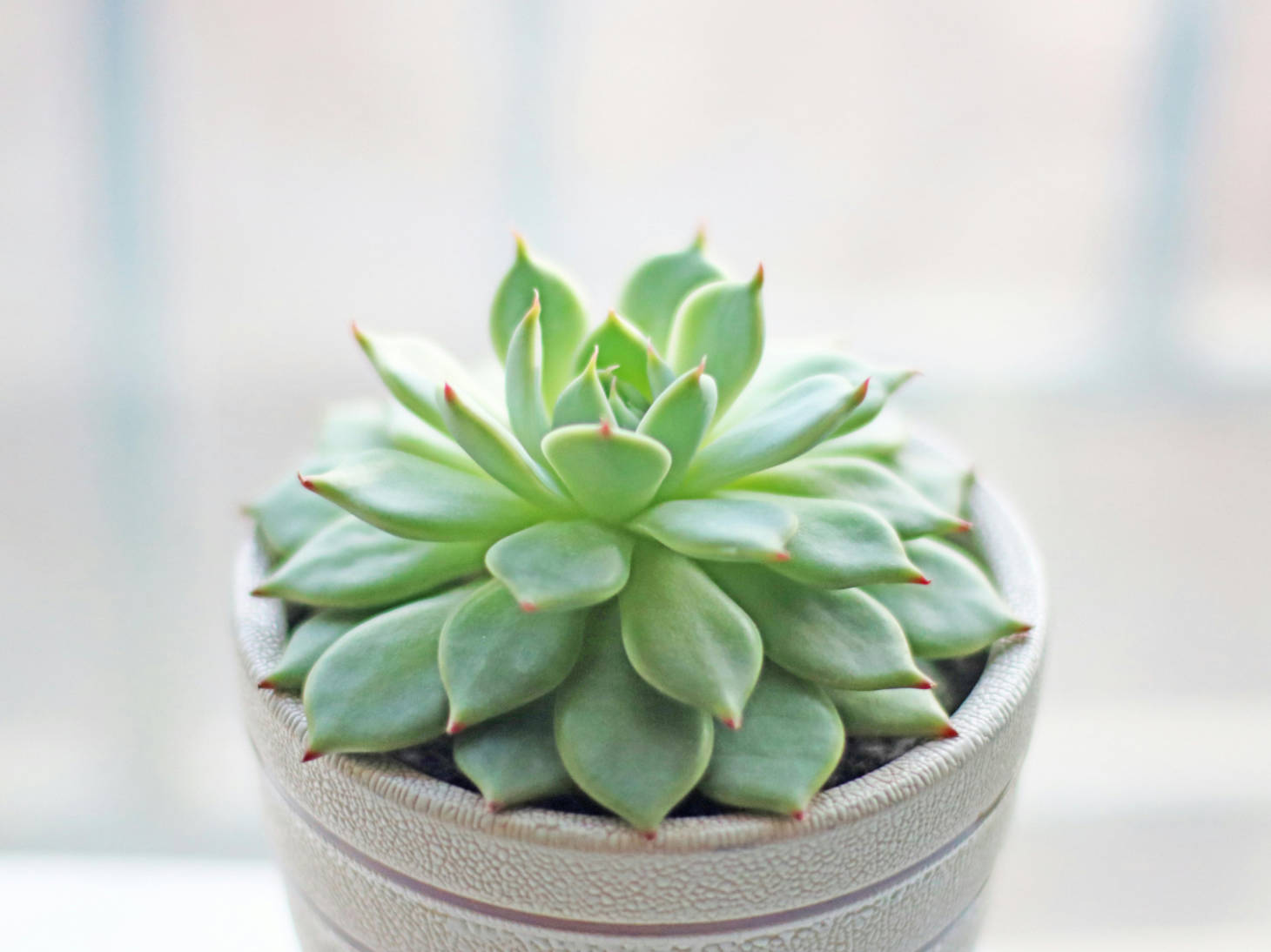
Echeverias are excellent choices for decorative arrangements and can add a pop of color to your indoor space. Their compact size makes them perfect for small pots or terrariums. You can propagate Echeverias easily from leaves or offsets, allowing you to expand your collection quickly.
Jade Plants (Crassula)
Jade plants, scientifically known as Crassula ovata, are popular indoor succulents with thick, woody stems and oval-shaped leaves. They’re often called “money plants” due to the belief that they bring good fortune.
Some common jade plant varieties include:
Crassula ovata (Common Jade Plant):
This is the most well-known and widely cultivated variety. It has thick, fleshy, oval-shaped green leaves that can develop a red edge when exposed to enough sunlight. The plant has a tree-like growth habit, making it popular as a houseplant or bonsai.
Crassula ovata ‘Hobbit’ (Hobbit Jade or Gollum Jade):
Known for its unusual, tubular leaves that are often curled inward, this variety has a distinctive appearance compared to the common jade plant. The leaves may also have reddish tips, and it can grow in a compact, bushy form.
Crassula arborescens (Silver Jade Plant or Blue Buddha Bush):
This variety has round, bluish-gray leaves with red edges. The leaves tend to be thicker and more compact than the common jade plant, giving it a silvery hue. It has a more shrubby appearance and can grow larger than the other types.
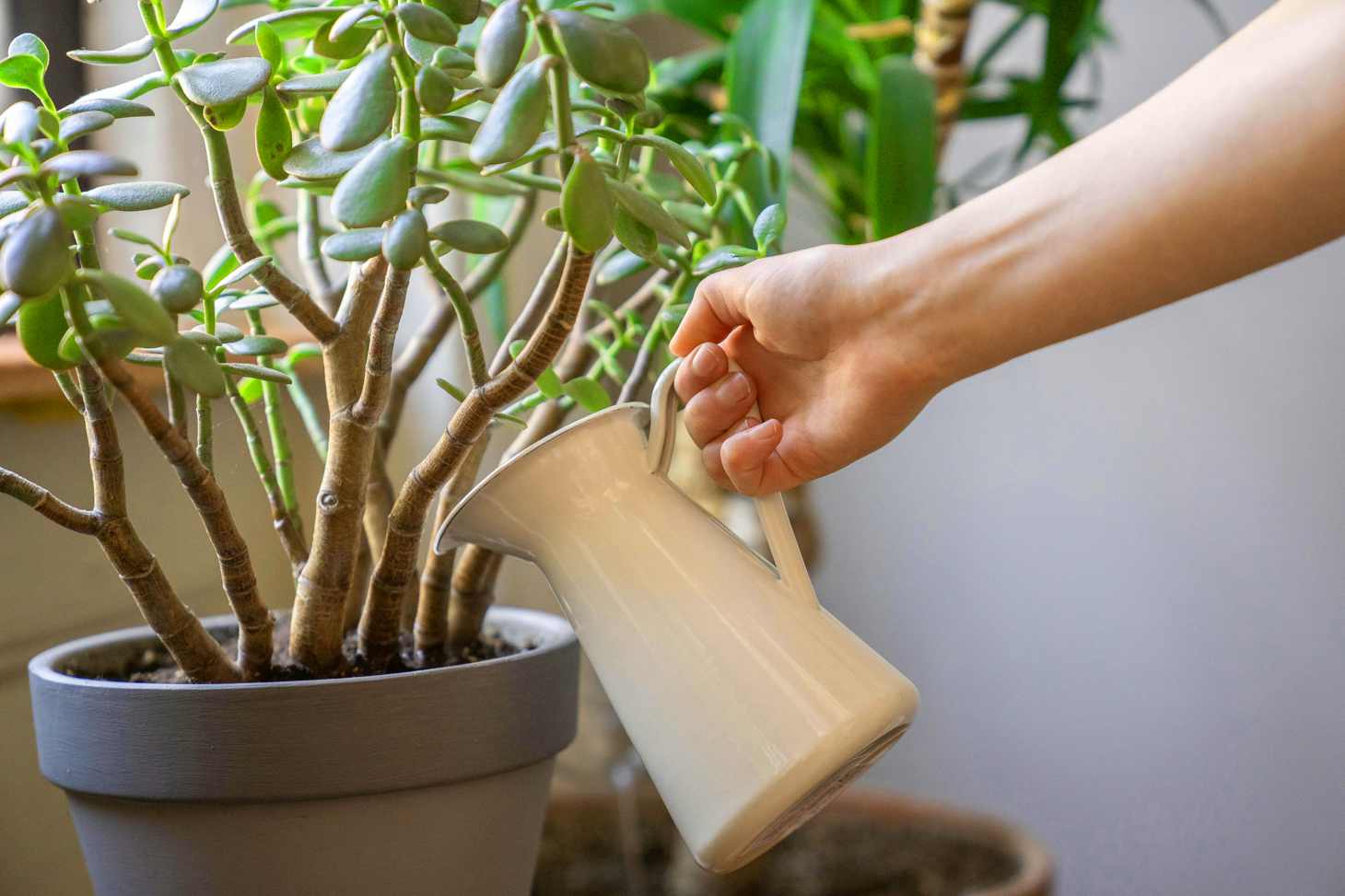
Jade plants prefer bright, indirect light but can tolerate some direct sunlight. They’re drought-tolerant and should be watered sparingly, allowing the soil to dry out between waterings.
These succulents are known for their longevity and can live for decades with proper care. Jade plants are also excellent air purifiers, making them a healthy addition to your home or office space.
Snake Plants (Dracaena trifasciata)
Snake plants, also known as mother-in-law’s tongue, are hardy succulents with upright, sword-like leaves. Popular varieties include:
- Dracaena trifasciata ‘Laurentii’
- Dracaena angolensis (Cylindrical Snake Plant)
- Dracaena trifasciata ‘Moonshine’
These plants are incredibly low-maintenance and can thrive in various light conditions, from low light to bright, indirect sunlight. Snake plants are drought-tolerant and prefer to be under-watered rather than overwatered.

Snake plants are excellent air purifiers, known for removing toxins like formaldehyde and benzene from indoor air. They’re perfect for bedrooms as they release oxygen at night, potentially improving sleep quality.
Haworthia Succulents
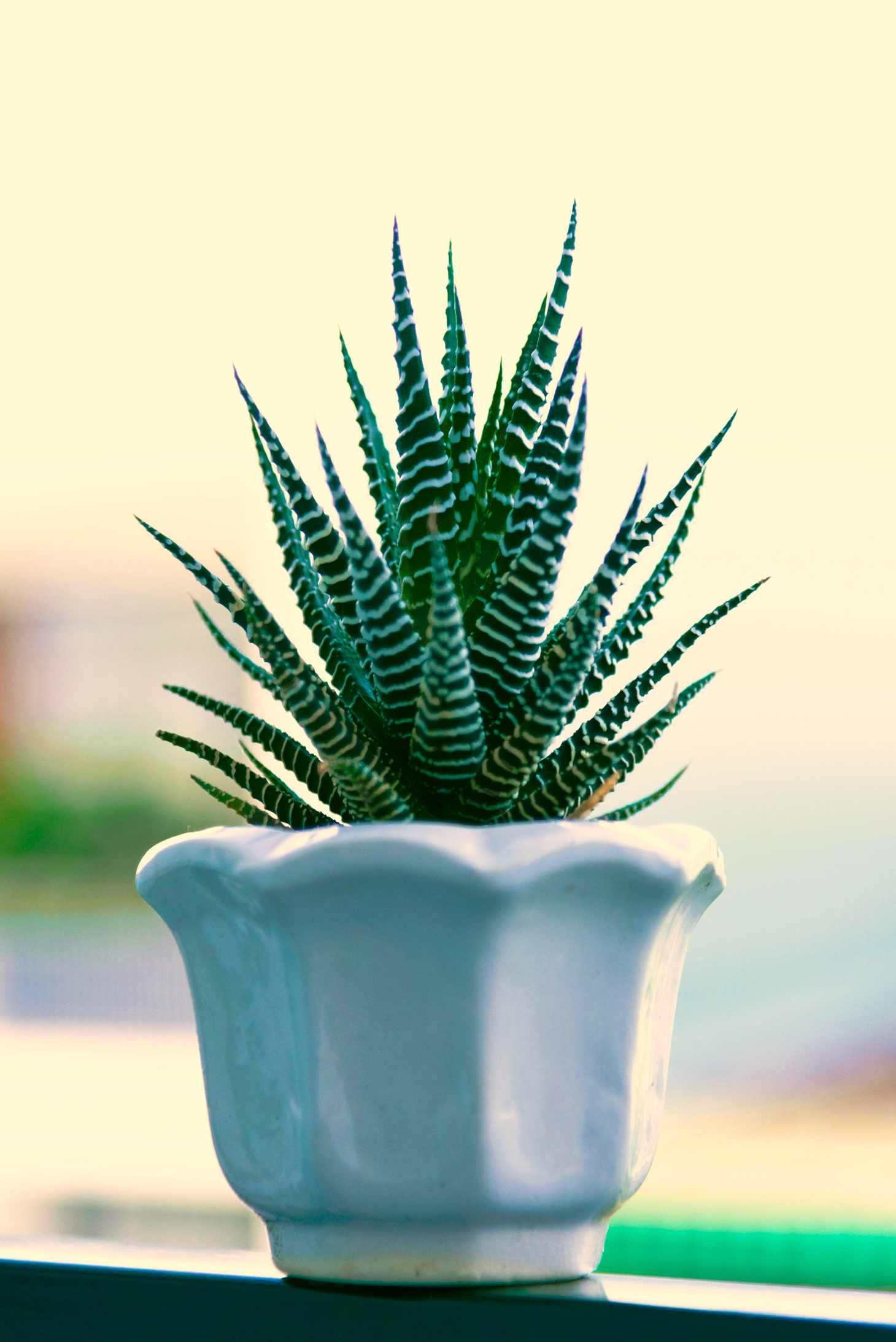
Haworthia succulents are small, compact plants that make excellent additions to indoor succulent collections. Popular species include:
- Haworthia fasciata (Zebra Plant)
- Haworthia cooperi (Cooper’s Haworthia)
- Haworthia retusa (Star Window Plant)
These succulents prefer bright, indirect light but can tolerate lower light conditions better than many other succulents. Water them sparingly, allowing the soil to dry out completely between waterings.
Haworthias are ideal for small spaces and desk gardens due to their compact size. They’re slow-growing and don’t require frequent repotting. You can easily propagate Haworthias through offsets, allowing you to share these charming plants with friends and family.
Designing with Succulents

Succulents offer endless possibilities for creative indoor design. Their unique shapes and textures can enhance any space when arranged thoughtfully.
Creative Planters
You can showcase succulents in various innovative containers. Shallow containers work well due to succulents’ shallow root systems. Consider repurposing everyday items like teacups, mason jars, or vintage tins for a charming display.
For a modern look, try geometric terrariums or minimalist concrete planters. Hanging planters can add vertical interest to your space. Ensure proper drainage by adding holes or a layer of pebbles at the bottom of non-traditional containers.
Mix different planter sizes and styles to create visual interest. Group odd numbers of pots for a pleasing aesthetic. Remember to choose containers that complement your home’s decor and the succulents’ colors and shapes.
Arrangement Ideas
When arranging succulents, consider their diverse forms and hues. Create contrast by combining different types, such as rosette-shaped echeverias with trailing burro’s tail.
Play with height by placing taller succulents like euphorbia at the back and shorter ones in front. Use a thriller-filler-spiller approach:
- Thriller: Eye-catching centerpiece (e.g., aeonium)
- Filler: Smaller plants to fill gaps (e.g., sedum)
- Spiller: Trailing varieties for edges (e.g., string of pearls)
Experiment with color themes. Create a monochromatic look with different shades of green, or mix complementary colors like purple and yellow succulents. Remember to leave some space between plants to allow for growth and maintain their distinct shapes.

